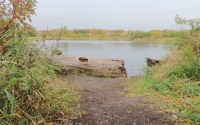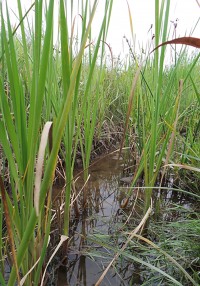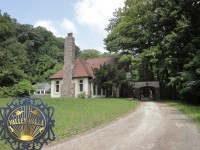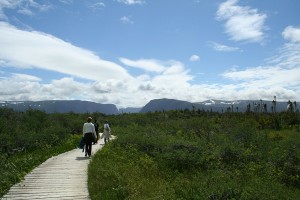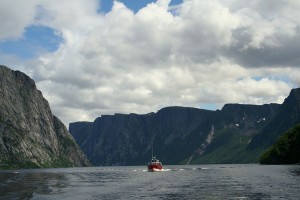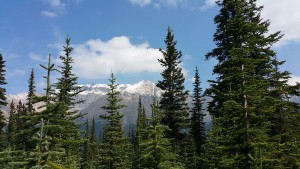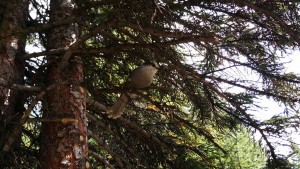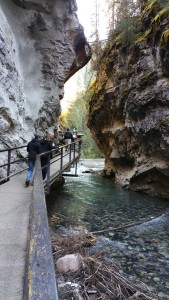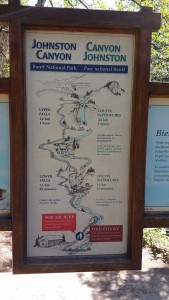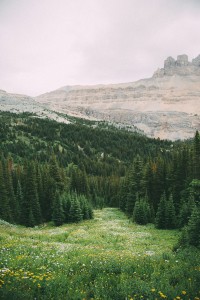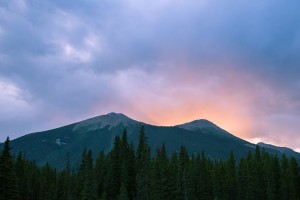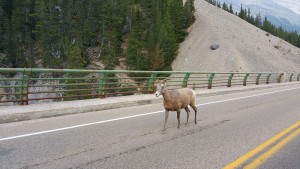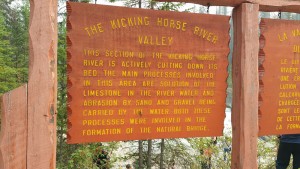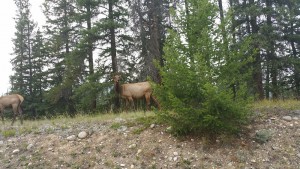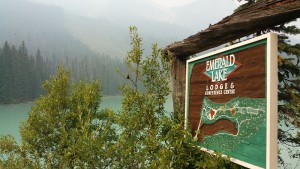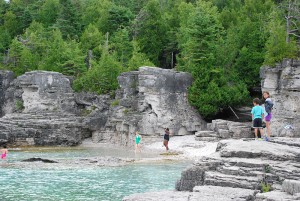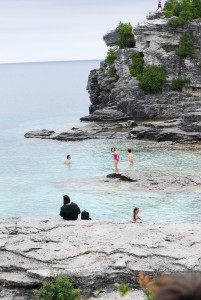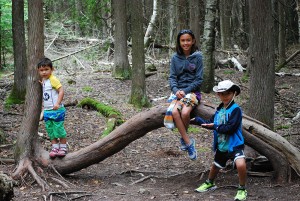Photo courtesy of Teah Lizee
Parks Canada moves on Liberal promises
Canadians can expect some changes coming to their national parks within the year.
Yoho National Park in British Columbia. Photo courtesy of Andrew Thomas
During the 2015 federal election, the Liberals made campaign promises about Parks Canada. Some of these promises included limiting development in national parks, completing Canada’s first urban national park and growing the Learn-to-Camp program. Prime Minister Justin Trudeau’s mandate letter to Catherine McKenna, Minister of Environment and Climate Change, highlighted many of these campaign promises. The letter states: “These priorities draw heavily from our election platform commitments.”
Limiting development
Limiting development in national parks was a campaign promise and outlined in McKennna’s mandate letter. In February, Parks Canada denied permission for the 24-metre tall Mother Canada memorial to be built in Cape Breton Highlands National Park. This shows that Parks Canada is making the campaign promise of limiting development in national parks a priority in 2016.

Cape Breton Highlands National Park in Nova Scotia. Photo courtesy of Sarah Porter.
Rouge National Urban Park
The Rouge National Urban Park is more than 30 years in the making, and it is still not complete. Parks Canada only has ownership of about one third of the land that will complete the Rouge  National Urban Park. Ontario owns the rest of this land, which remains as the provincial Rouge Park.
National Urban Park. Ontario owns the rest of this land, which remains as the provincial Rouge Park.  The remaining provincial lands need to be transferred to Parks Canada before the Rouge National Urban Park can be completed.
The remaining provincial lands need to be transferred to Parks Canada before the Rouge National Urban Park can be completed.
Pauline Browes, a former Conservative member of Parliament and minister of state for environment, introduced the idea of the Rouge National Urban Park in the House of Commons in the 1980s.
“As we moved closer to the [2015] election what was really unfortunate, was that the province decided that the federal government wasn’t going to be protecting this sufficiently enough with the legislation,” says Browes. “So they said ‘no, we’re not transferring the land.’ And it had nothing to do with protection, because Parks Canada has got the most outstanding reputation of protection and preservation and environmental sustainability…It had nothing to do with anything regarding the environment, in my opinion. It had everything to do with politics. That was well documented in an editorial in the Globe and Mail.” Presently there is no scheduled date for the completion of the Rouge National Urban Park, but conservation and rehabilitation initiatives are taking place this year in the park.
“Work on the 15 projects, announced in July 2015 as part of the $15 million investment in the conservation of Rouge National Urban Park, will be completed in April 2016,” a Parks Canada representative said in an email. “These projects were some of the first conservation projects undertaken by Parks Canada to enhance the health of Rouge National Urban Park’s ecosystems and farmland, and to conserve its cultural landscapes.”

Rouge National Urban Park. Photo courtesy of Larry Noonan
Larry Noonan, an environmental activist and Rouge National Urban Park hike leader, has seen some of these projects develop. However, the 15 projects are only on federally owned land. “My hope is that this transfer of Ontario lands will be achieved very soon. By the summer would be great so that Parks Canada can start much needed work,” says Noonan. He is part of Friends of the Rouge National Urban Park.
- Rouge National Urban Park in Ontario: Beare Wetlands. Photo courtesy of Larry Noonan
- Rouge National Urban Park in Ontario: after rehabilitation project. Photo courtesy of Larry Noonan
- Rouge National Urban Park in Ontario: Valley Halla. Photo courtesy of Larry Noonan
Noonan says there is work needed, including repairing a “dangerous pedestrian bridge across the Rouge River” and river habitat restoration. Noonan says currently “none of this is now taking place on Ontario-controlled lands.”
 In February, McKenna also announced a project to restore Blanding’s turtles to the Rouge National Urban Park. She said in a news release that she was: “proud that Parks Canada will be making a contribution of $150,000 to the Toronto Zoo as a key partner in the program that is helping re-establish a healthy, local population of this threatened species.”
In February, McKenna also announced a project to restore Blanding’s turtles to the Rouge National Urban Park. She said in a news release that she was: “proud that Parks Canada will be making a contribution of $150,000 to the Toronto Zoo as a key partner in the program that is helping re-establish a healthy, local population of this threatened species.”
Learn-to-Camp program
The Learn-to-Camp program, which takes place at the Rouge and 20 other national parks and historic sites across Canada, is being slightly expanded this year. This program offers families or individuals who are new to camping, the opportunity to camp for a night at a Parks Canada site. Most programs take around 60 people on a first-come-first-serve basis. It costs around $44 per person, and all of the camping equipment is provided. Scheduled activities vary depending on the park or historic site. Here is the schedule for Learn-to Camp at Vancouver’s Fort Rodd Hill and Fisgard Lighthouse National Historic Sites.
Julie Lefebvre from Parks Canada says that since the program began in 2011, it continues to grow every year. She says that Ontario’s Trent-Severn Waterway National Historic Site is one site that is being added this summer. Quebec’s Fort Chambly National Historic Site is another place they are working with to hopefully also offer the Learn-to-Camp program.
- Gros Morne National Park in Newfoundland. Photo courtesy of Sarah Porter
- Gros Morne National Park in Newfoundland. Photo courtesy of Sarah Porter
- Gros Morne National Park in Newfoundland. Photo courtesy of Sarah Porter
Lefebvre says by 2017 they plan to complete a larger expansion of the program. This will include more sites, offering the program more often and outreach programs.
“When spring comes, we’re getting calls from participants,” says Lefebvre. “I think there’s more and more people knowledgeable that this program is being offered at different places.”
Parks closer to big cities have higher demand for the program, so it is easier to hold the Learn-to-Camp program more often, says Lefebvre. The Rouge National Urban Park will hold the program twice this summer—in June and September. Registration for the Learn-to-Camp program opens in May.
- Banff National Park in Alberta. Photo courtesy of Andrew Thomas
- Banff National Park in Alberta. Photo courtesy of Andrew Thomas
- Banff National Park in Alberta. Photo courtesy of Andrew Thomas
- Banff National Park in Alberta. Photo courtesy of Andrew Thomas
- Banff National Park in Alberta. Photo courtesy of Andrew Thomas
- Jasper National Park in Alberta. Photo courtesy of Teah Lizee
- Jasper National Park in Alberta, Icefields Parkway. Photo courtesy of Teah Lizee
- Jasper National Park in Alberta, Athabasca Glacier. Photo courtesy of Teah Lizee
- Yoho National Park in British Columbia. Photo courtesy of Andrew Thomas
- Yoho National Park in British Columbia. Photo courtesy of Andrew Thomas
- Yoho National Park in British Columbia. Photo courtesy ofy Andrew Thomas
- Yoho National Park in British Columbia. Photo courtesy of Andrew Thomas
- Bruce Peninsula National Park in Ontario. Photo courtesy of Andrea Lie
- Bruce Peninsula National Park in Ontario. Photo courtesy of Andrea Lie
- Bruce Peninsula National Park in Ontario. Photo courtesy of Andrea Lie
[Header Photo © Teah Lizée]
View Comments
Research shortfall stalls promise to lift blood ban for gay men
By Victoria Klassen | Liberal campaign promises about Parks Canada introduced in...
